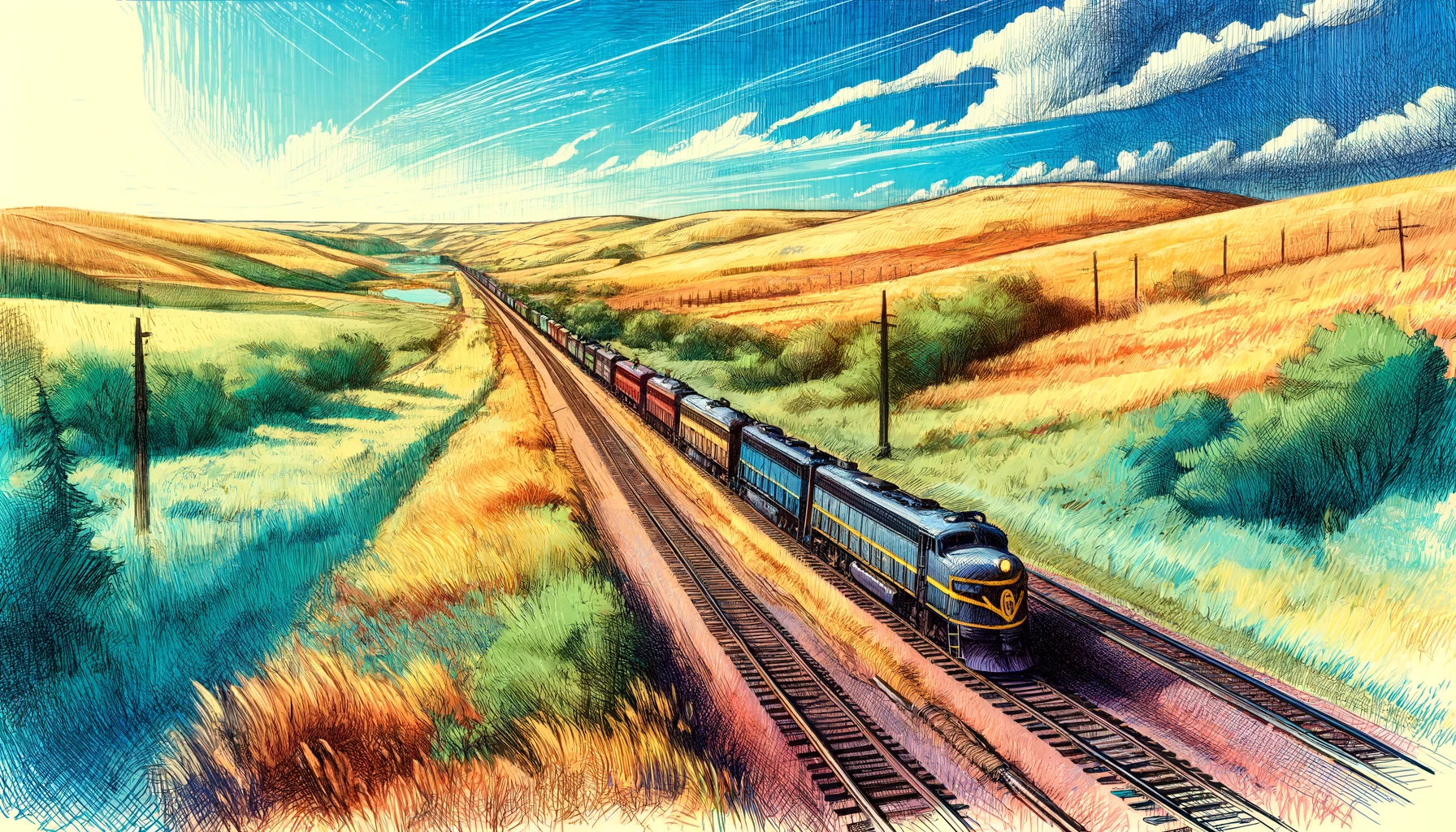Great Plains Wildflower Ecology

Traveling through Nebraska, one can't help but be captivated by the breathtaking beauty of the Great Plains' vast expanse of wildflowers. These diverse and vibrant plant species, many of which are native to the region, play a crucial role in the ecology of the Great Plains. As a central component of this ecosystem, wildflowers provide essential habitat, food, and shelter for a wide variety of animals, from pollinating insects like bees and butterflies to grazing herbivores like bison and prairie chickens.
One of the most fascinating aspects of Great Plains wildflower ecology is the complex relationships that exist between these plant species and the region's unique soils. For instance, the Sandhills of western Nebraska, characterized by their sandy, well-drained soils, are home to a distinct assemblage of plant species that have adapted to these specific conditions. The larkspur, for example, has deep taproots that allow it to access water deep within the sandy soil, giving it a competitive advantage over other plant species. In contrast, the relatively impermeable soils of eastern Nebraska's tallgrass prairies support a different set of wildflowers, such as the compass plant, which relies on its thick, fibrous roots to maintain structural integrity in the face of seasonal droughts.
Wildflowers also play a key role in maintaining the structure and diversity of the Great Plains ecosystem. By providing a rich source of nectar and pollen, wildflowers support a diverse array of pollinators, which are essential for the reproduction of many plant species. This, in turn, helps to maintain the genetic diversity of these plant populations, allowing them to adapt and respond to changing environmental conditions. Additionally, the seeds produced by wildflowers are an important food source for many animals, from birds like the black-capped chickadee to small mammals like the deer mouse.
At Smith Falls State Park, located in northeastern Nebraska's Ponca Hills region, one can witness firsthand the critical role that wildflowers play in maintaining ecosystem health. The park's mix-grass prairies, which contain a diverse assemblage of plant species like prairie clover and ironweed, support a wide variety of wildlife, including white-tailed deer, bobwhite quail, and even the occasional monarch butterfly. In contrast, the park's woodland areas, characterized by an overstory of eastern redbud and American bur oak, support a different set of wildflowers, such as bellwort and spotted mandrake, which thrive in the shade provided by the trees.
Another fascinating aspect of Great Plains wildflower ecology is the complex relationships that exist between these plant species and fire. Many wildflower species have evolved to respond to fire, either by germinating from seed in response to fire scars or by growing rapidly in the aftermath of a fire. The prairie coneflower, for instance, relies on periodic fires to clear away competing vegetation and promote its growth. In areas where fire has been suppressed, such as in many modern-day agricultural landscapes, this complex dynamic can be disrupted, leading to changes in the diversity and abundance of wildflower species.
Additionally, Great Plains wildflowers have played an important role in the human experience of the region, with many Native American tribes relying on these plant species for food, medicine, and spiritual practices. The blue grama grass, for example, was used by the Omaha tribe to construct lodges and create ceremonial objects. Likewise, the goldenrod, often mistakenly believed to cause hay fever, was used by the Winnebago tribe to treat a variety of ailments, including bronchitis and rheumatism.
Visiting the Pawnee National Grassland in southeastern Colorado, one can glimpse the historic importance of wildflowers to Native American tribes like the Pawnee and Arapaho, who traditionally inhabited this region. The area's diverse wildflower species, including the lavender-like gayfeather and the delicate prairie rose, are an integral part of this landscape's rich cultural and ecological heritage.
One of the most fascinating aspects of Great Plains wildflower ecology is the complex relationships that exist between these plant species and the region's unique soils. For instance, the Sandhills of western Nebraska, characterized by their sandy, well-drained soils, are home to a distinct assemblage of plant species that have adapted to these specific conditions. The larkspur, for example, has deep taproots that allow it to access water deep within the sandy soil, giving it a competitive advantage over other plant species. In contrast, the relatively impermeable soils of eastern Nebraska's tallgrass prairies support a different set of wildflowers, such as the compass plant, which relies on its thick, fibrous roots to maintain structural integrity in the face of seasonal droughts.
Wildflowers also play a key role in maintaining the structure and diversity of the Great Plains ecosystem. By providing a rich source of nectar and pollen, wildflowers support a diverse array of pollinators, which are essential for the reproduction of many plant species. This, in turn, helps to maintain the genetic diversity of these plant populations, allowing them to adapt and respond to changing environmental conditions. Additionally, the seeds produced by wildflowers are an important food source for many animals, from birds like the black-capped chickadee to small mammals like the deer mouse.
At Smith Falls State Park, located in northeastern Nebraska's Ponca Hills region, one can witness firsthand the critical role that wildflowers play in maintaining ecosystem health. The park's mix-grass prairies, which contain a diverse assemblage of plant species like prairie clover and ironweed, support a wide variety of wildlife, including white-tailed deer, bobwhite quail, and even the occasional monarch butterfly. In contrast, the park's woodland areas, characterized by an overstory of eastern redbud and American bur oak, support a different set of wildflowers, such as bellwort and spotted mandrake, which thrive in the shade provided by the trees.
Another fascinating aspect of Great Plains wildflower ecology is the complex relationships that exist between these plant species and fire. Many wildflower species have evolved to respond to fire, either by germinating from seed in response to fire scars or by growing rapidly in the aftermath of a fire. The prairie coneflower, for instance, relies on periodic fires to clear away competing vegetation and promote its growth. In areas where fire has been suppressed, such as in many modern-day agricultural landscapes, this complex dynamic can be disrupted, leading to changes in the diversity and abundance of wildflower species.
Additionally, Great Plains wildflowers have played an important role in the human experience of the region, with many Native American tribes relying on these plant species for food, medicine, and spiritual practices. The blue grama grass, for example, was used by the Omaha tribe to construct lodges and create ceremonial objects. Likewise, the goldenrod, often mistakenly believed to cause hay fever, was used by the Winnebago tribe to treat a variety of ailments, including bronchitis and rheumatism.
Visiting the Pawnee National Grassland in southeastern Colorado, one can glimpse the historic importance of wildflowers to Native American tribes like the Pawnee and Arapaho, who traditionally inhabited this region. The area's diverse wildflower species, including the lavender-like gayfeather and the delicate prairie rose, are an integral part of this landscape's rich cultural and ecological heritage.
